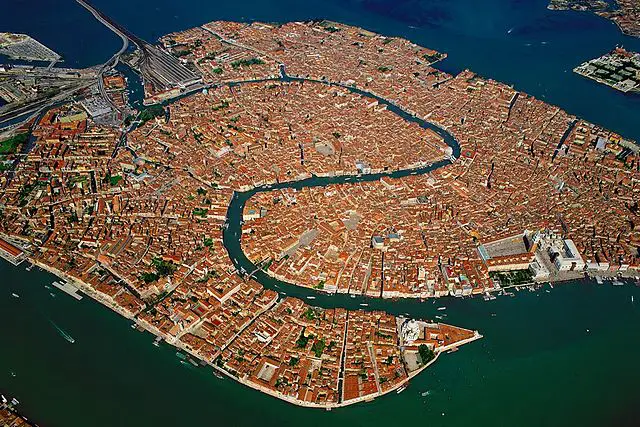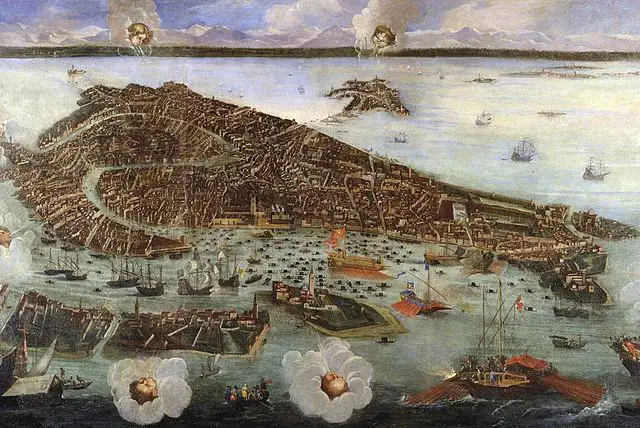Picture this: a city built on water, shimmering like a dream, where boats replace cars and pigeons loiter like seasoned locals in grand piazzas. Now imagine it’s all sitting on top of millions of ancient tree trunks, silently holding their breath beneath the waves.
Wait, Venice Is Built on What Now?
Yep. Logs. Millions of them. The entire city of Venice rests on submerged timber piles that were driven into the soft, muddy lagoon floor starting over a thousand years ago. Not concrete. Not marble. Wood. It’s like finding out the Eiffel Tower is actually made of stacked Jenga blocks.
But here’s the magic twist. These logs haven’t rotted away into mush. They’ve survived for centuries. And they’re still doing the heavy lifting today. So how does that work? Why didn’t the whole thing sink into the sea like a failed Pinterest project?
The Science of Rot-Defying Timber
First, the kind of wood mattered. The Venetians used alder, larch, and oak trees, types known for their resilience. Then they submerged the logs completely underwater in the oxygen-starved mud of the lagoon. And here’s where it gets clever: rot needs oxygen to do its thing. No oxygen? No rot.
Over time, the minerals in the water actually seeped into the wood and petrified it, kind of like how bones fossilize. So those logs are now basically stone pretending to be wood. Nature’s weird, right?
The Venetians Were Not Playing Around
Venice didn’t just happen by accident. It was a response to chaos. Around the 5th century, people fled barbarian invasions on the mainland and took refuge in the marshes. They built temporary homes on wooden platforms. Then temporary turned into permanent, and eventually into a city of palaces, canals, and art.
To build it, they floated logs in by raft and pounded them into the lagoon floor by hand and hammer, one next to the other. Then more logs were placed on top, and stone foundations built over those. Think Lincoln Logs meets underwater engineering.
The sheer scale is wild. It took around 1,200,000 logs just to build the island of Santa Maria della Salute. That’s just one church.

A City That Shouldn’t Exist
Venice really shouldn’t be here. Engineers scratch their heads. Climate scientists worry about its future. And yet, here it still is, centuries later, balancing on the tiptoes of forgotten forests.
Tourists snap selfies on the Rialto Bridge without realizing it stands on trees older than most modern countries. Gondolas glide through canals that run where wild geese once nested.
It’s almost poetic. A city of human ambition, floating on the quiet patience of trees.
Cracks in the Foundation
But it’s not all gondolas and gelato. Venice is sinking. Slowly. And rising sea levels aren’t helping. The city has implemented MOSE, a system of massive underwater gates, to block high tides. But water has a way of winning in the end.
And those ancient logs? Still solid for now, but they won’t last forever. Maintenance is constant. Every new crack in the pavement tells a story.
So Why Does It Matter?
Preserving Venice requires a combination of engineering, conservation, and environmental efforts. Engineers have explored ways to strengthen and restore Venice’s wooden piles without disturbing the delicate balance of the lagoon. Additionally, efforts to regulate tourism and boat traffic could help reduce damage caused by excessive human activity. Sustainable water management is also crucial to Venice’s survival, as preventing further subsidence and managing water levels effectively can help maintain stability. Continued use of MOSE barriers, if properly maintained and improved over time, could mitigate future flooding.
Conclusion: Venice’s Wooden Foundations—A Marvel of Ancient Engineering
Because Venice isn’t just an old city. It’s a symbol of what human beings can do when they’re desperate, creative, and wildly optimistic. They built a masterpiece where no city should have stood. On trees. Underwater.
It’s both ridiculous and inspiring.
And next time you find yourself in Venice, or just dreaming about it from a scrolling screen, picture those millions of logs below your feet. Picture the laborers who hauled them, soaked them, pounded them into the mud, and trusted they’d hold.
They did. And somehow, they still do.
Sources:
1. Hidden Treasures: Venice
2. Britannica
3. Atlaobscura

